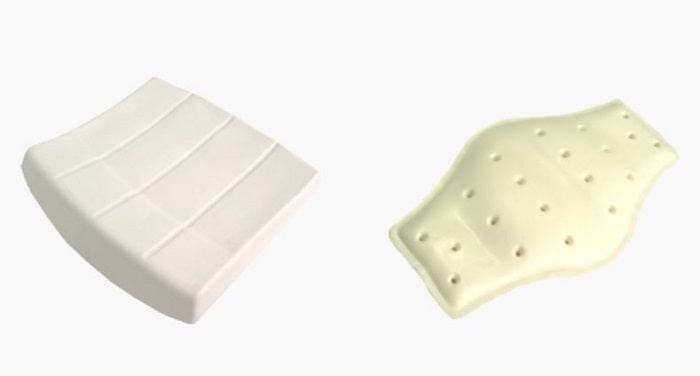
Demand for medical-grade foam products continues to skyrocket across the healthcare industry in 2023. Specialized foam products offer huge potential in modern day medical settings. The unique composition of foam application lowers germs, bacteria, and disease transmission risks. Additionally, quality medical foams elevate patient comfort and reduce hospital equipment costs. As a medical practice owner yourself, consider the latest trends, innovations, and breakthroughs in the healthcare foam market. This way, you can upgrade your facility with the latest products, technologies, and innovations. Read on to learn abut the growing demand for foam healthcare applications growing in the medical industry.
Custom Foam Orthotics
First off, closed-cell foam materials can be used to produced custom-designed, individually-fitted medical orthotics. Placed in the bottom of the shoe, these foam applications provide patients’ comfort and support throughout everyday activities. Durable, flexible, and versatile foam provides total contact with the foot – for maximum reinforcement. This is possible through heat-engineered thermos-molding manufacturing processes. High-grade orthotics are known to enhance balance, posture, and physical endurance. Plus, they can reduce ankle aches, leg pain, bunions, and calluses. Certainly, demand for medical-grade, custom-fitted foam orthotics continue to dominate the healthcare industry.
Supportive, Comforting Medical Seats
Closed cell, extralight injected foam can also be used to produce comfortable seating and supportive cushioning. EVA foam products are chemical resistant, 100% waterproof, and latex-free – making them a perfect fit for medical applications. Expert manufacturers at Foam Creations Inc. produce soft-touch, biocompatible seats for wheelchairs, hospital toilets, activity chairs, and medical equipment. They also produce lightweight, injection-molded orthopedic backrests and medical device covers. These medical- grade products are known for their unsurpassed quality, easy cleanability, robust design, and low weight composition. Surely, analyze the growing demand for supportive, comforting seating in the healthcare sector.
Patient Positioners
Custom foam engineered products can also be used for patient positioning in medical settings. Eliminate uncomfortable, restrictive immobilization devices at your practice. Instead, use comforting, durable, and stiff foam applications during daily procedures, routine therapies, and surgeries. Foam manufacturing methods can be used to produce donut-shaped pillows, surgical table pads, and arm protectors. They can also be used to make head, joint, torso, and shoulder positioners. Thanks to foam’s easy to clean configuration – sanitation and sterilization concerns are never a thing. Indeed, utilize top-quality foam products for patient positioning and immobilization in the healthcare environment.
Medical Dressings And Wound Protection
Foam can also be used to produce medical dressings, gauzes, and wound protection bandages. Medical- grade foam can be used to protect, support, and cushion a wide range of different injuries and wounds. Antimicrobial foams promote a healthy healing environment through moisture management and bacteria control. Of course, these ultra-soft materials are known to alleviate skin trauma, minimize discomfort, and improve adhesion. Most foam dressings also use a cover dressing – often made of silicone – and tape to stabilize positioning. However, some products use a specialized type of foam that is 100% waterproof. Absolutely, consider using foam products for bandages, gauzes, medical dressings, and wound guards at your practice.
Equipment Storage
Since hospitals rely on hundreds of pieces of equipment, tools, devices, and machinery – foam storage plays a major role in healthcare facility organization. Foam storage is flexible, durable, and lightweight. So, it can hold a wide variety of different surgical, nursing, or technical equipment. It is a great choice for fragile, easily-breakable equipment that cannot sustain much movement during transit. Plus, the ultra- light design doesn’t add much weight to packaging. Foam storage is also known for superior liquid retention and absorption qualities. Depending on the storage needs required, thicker or thinner foams can be carefully selected. Custom foam applications can be designed to fit your specific cases, drawers, and other fixtures. Definitely, look at how foam is being used for equipment storage throughout the medical sector.
There is constantly rising demand for foam medical applications in the healthcare industry. There’s constant innovation in medical product supply chains. Medical practices are constantly investing in custom-fitted, total-contact orthotics. In addition, many healthcare practices, hospitals, and private clinics are improving comfort with supportive foam-injection molded seating. Plus, look at how foam is being used for patient immobilization and positioning systems. Even more, waterproof, ultra-soft foams can be used for bandages, gauzes, and wound protection dressings. Many practices are also starting to use equipment for organization and storage purposes. Foam’s lightweight, flexible, yet stable design has a huge impact on healthcare business organization. Follow the points highlighted above to learn about the growing demand for foam healthcare applications growing in the medical industry.